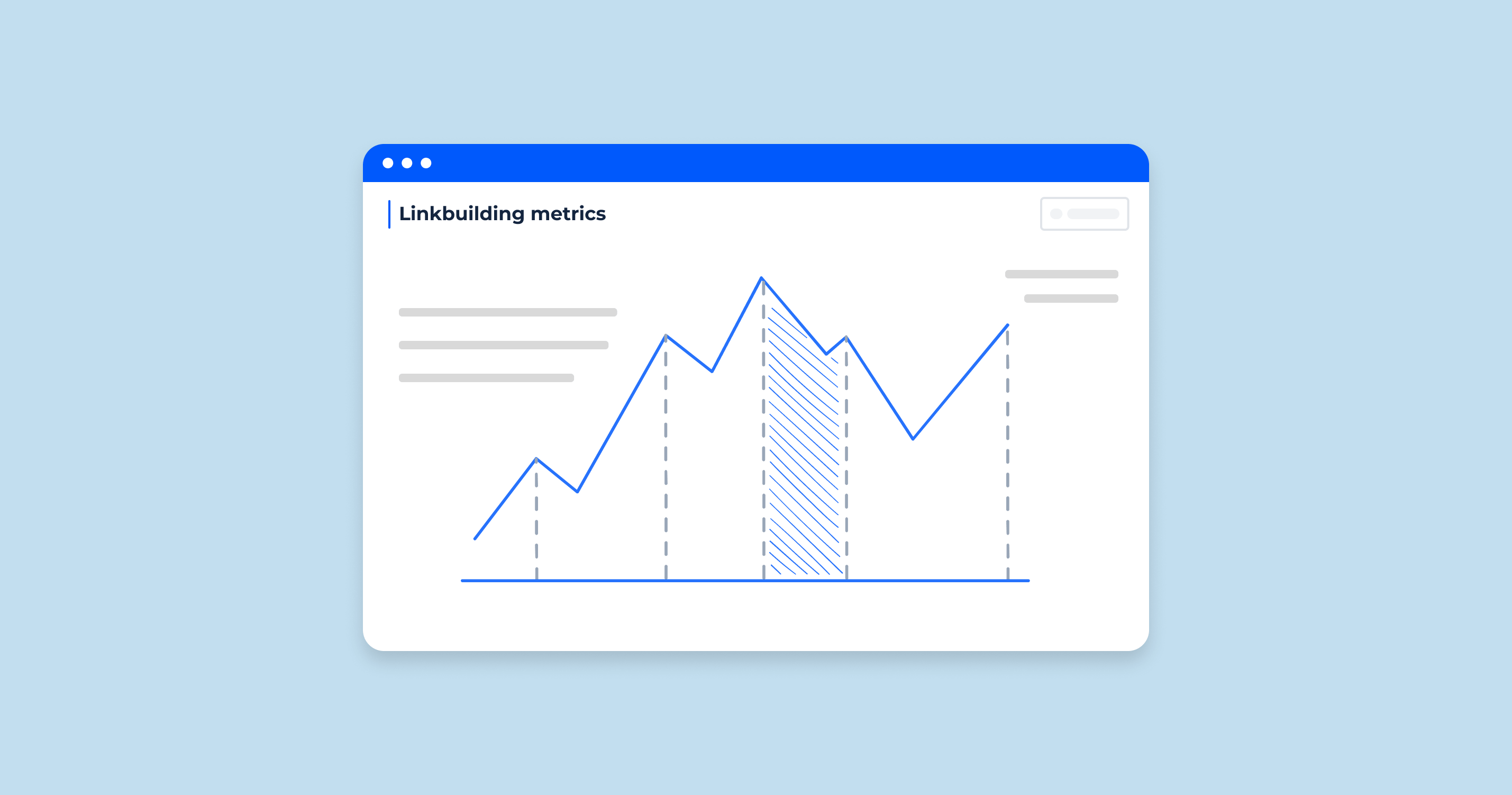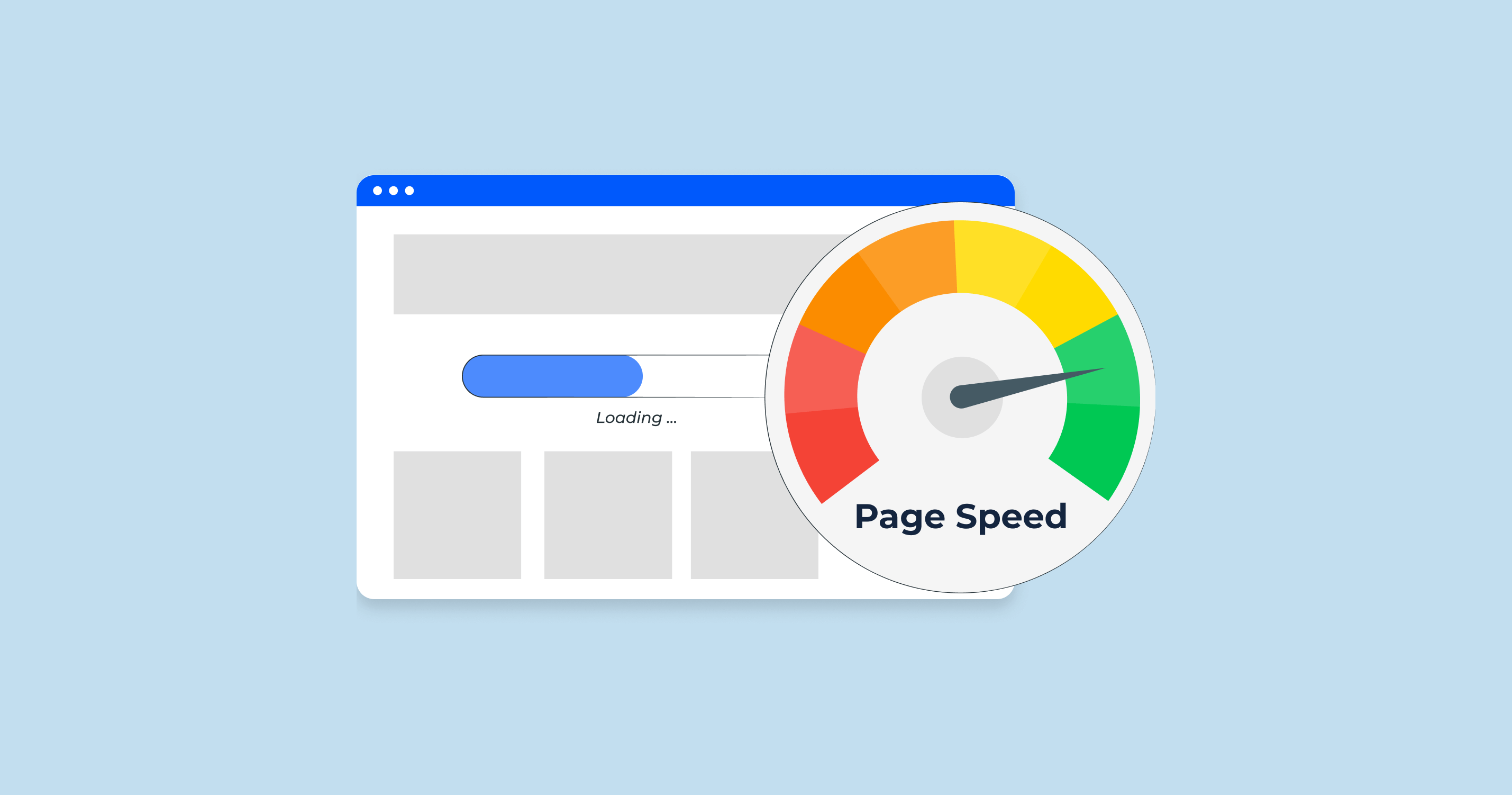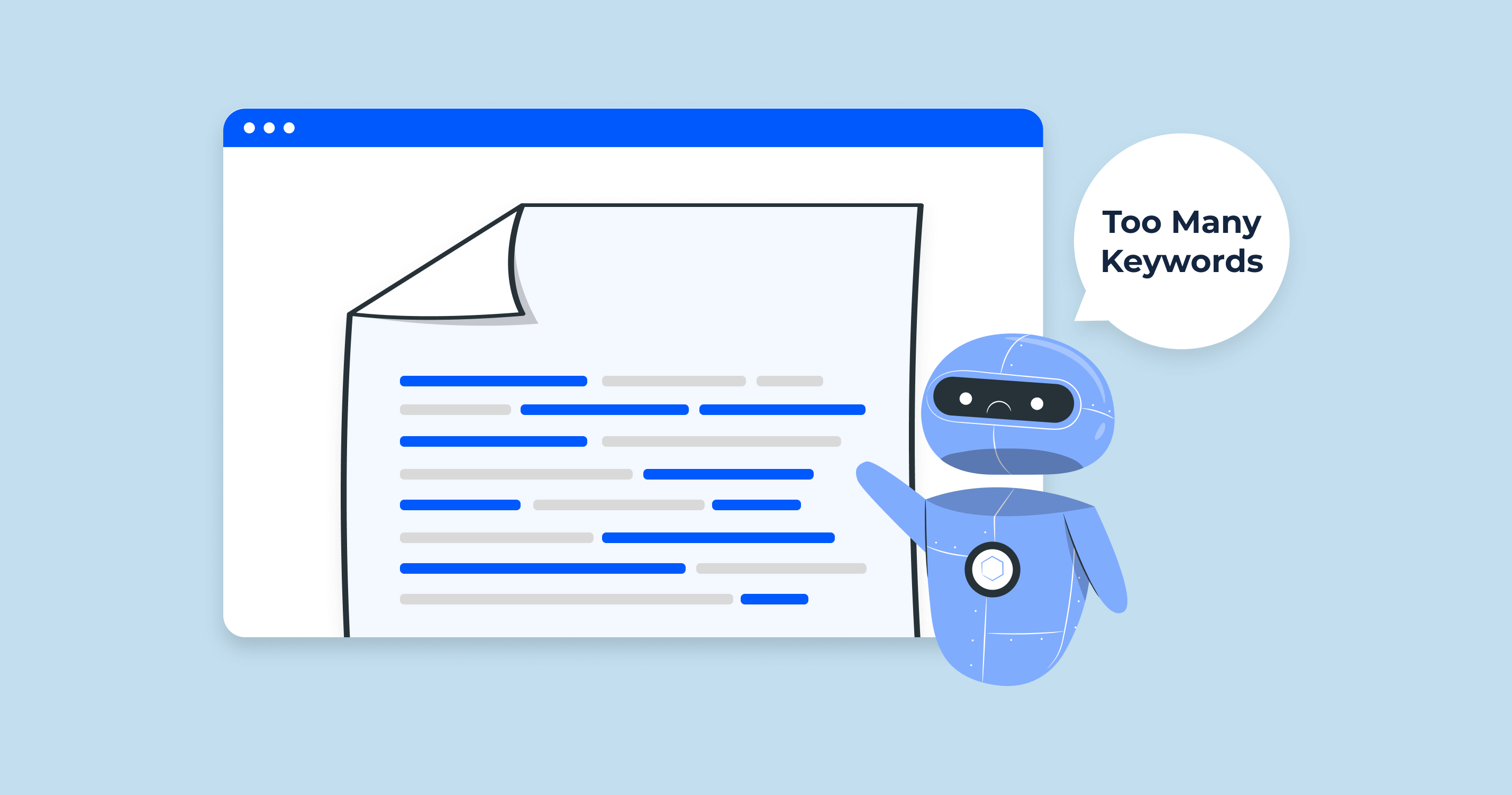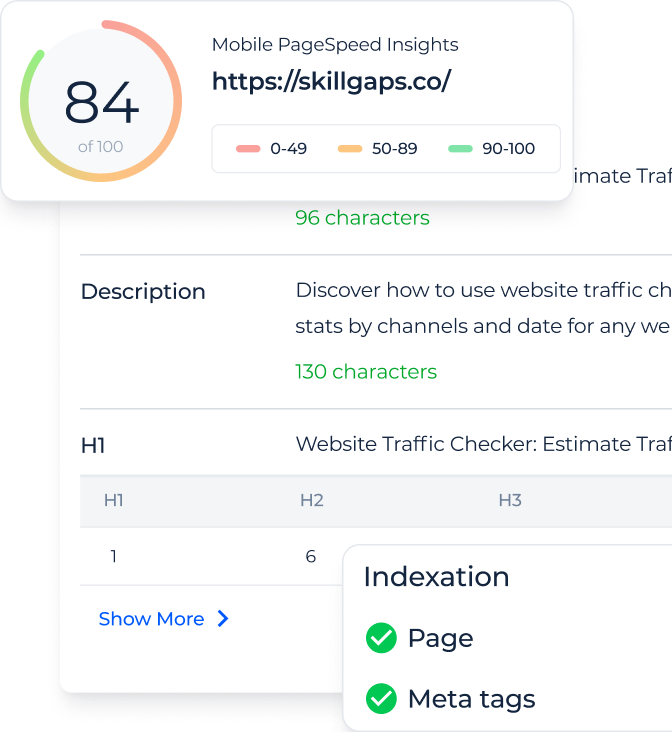Link metrics refer to the various factors that determine the ranking of search results. These metrics represent the stats of a specific webpage on the internet and often encompass elements such as domain authority, relevance, and trustworthiness.
Various link-related metrics are essential to understand, as they can help you evaluate the worth of potential cooperation with other websites. Knowing these metrics allows you to decide whether to pursue a link and allocate resources accordingly. Familiarity with these metrics is also beneficial when conducting link profile analysis on your own or a competitor’s website, providing a comprehensive overview of the quantity and types of links present.
Which Link-Building Metrics are Important for SEO
For effective SEO, several link building metrics are important to consider. These metrics help you assess the number and quality of links, contributing to better search engine rankings and visibility.
To evaluate a competitor’s backlink profile, several metrics can be utilized. These metrics provide insights into the strength and quality of their backlinks, which can help you devise better link-building strategies for your own website:
1. Total number of backlinks
This metric refers to the total number of incoming links to your website from other sites. A higher number of backlinks often indicates a more reputable site, but quality matters more than quantity.
While building backlinks, it is crucial to monitor the number of links you’ve created and compare your website’s performance to that of your competitors. This comparison helps you understand your position in the competitive landscape.
As previously discussed and supported by surveys, the sheer volume of web pages pointing to your website acts as a strong ranking signal. However, it’s essential to remember that link quality is equally, if not more, important than quantity.
The number of links as a metric is beneficial in two primary ways:
- Evaluating the progress and success of a link building campaign.
- Comparing your website with competitors’ sites.
In both cases, considering the quality of links is necessary for the metric to be truly useful. When comparing the number of backlinks on your website to those on a competitor’s site, you may uncover gaps that explain ranking differences.
2. Count of referring domains
his metric is the unique websites that redirect to your site. A higher number of referring domains can signal a more diverse and robust backlink and diverse backlink profile, which can positively impact search engine rankings. Search engines like Google consider websites with a large number of unique referring domains as more authoritative and trustworthy, which may lead to better visibility and higher positions in search engine results pages (SERPs).
However, it’s important to remember that the quality of these referring domains also is important in SEO. Acquiring backlinks from high-quality, reputable websites will have a much better impact on your rankings than numerous low-quality or spammy links.
3. Domain Authority (DA) & Page Authority (PA)
Domain authority score is a metric developed by Moz that predicts a website’s ability to rank on search engines based on the strength of its backlink profile. PA is similar but focuses on the authority of a specific page. Both are scored from 1 to 100, with higher scores indicating greater authority.
Domain strength is a metric that evaluates the overall strength of a website’s backlink profile and its likelihood to rank well on SERPs. DA considers factors like the number of linking root domains, the quality of these domains, and other proprietary Moz factors.
Page strength, on the other hand, measures the potential of a specific webpage to rank on SERPs. Similar to DA, PA considers the quality and quantity of backlinks, among other factors, but focuses solely on a single page rather than the entire website.
Domain Authority and Page Authority are valuable indicators for measuring a website’s search engine ranking potential. By focusing on improving these metrics, you can enhance your website’s visibility, attract more organic traffic, and ultimately achieve better results in SERPs.
Improving DA and PA can be achieved through various strategies, including acquiring high-quality backlinks, producing valuable and shareable content, optimizing on-page factors, and ensuring a well-structured site architecture. It is essential to remember that DA and PA are relative metrics, meaning they should be used to compare your website with the competitors in your industry rather than aiming for a specific score.
4. Trust Flow and Citation Flow
Developed by Majestic, these two metrics indicate the trustworthiness and influence of a website.
Trust Flow measures the quality of backlinks, while Citation Flow measures the number of backlinks. Ideally, you want to have a balanced ratio of Trust Flow to Citation Flow, indicating a healthy backlink profile.
5. Anchor text distribution
Anchor text is clickable text hyperlinked to some internal or external page. Monitoring the distribution of anchors in your backlinks can help you understand how other sites are connected to your content and ensure you’re avoiding over-optimization penalties from search engines.
In a recent SEO office-hours live stream, Google’s Search Advocate, John Mueller, discussed the impact of anchor text length on rankings. He explained that Google doesn’t necessarily treat longer or shorter anchor text differently when it comes to rankings.
However, providing more words in anchor text offers more context about the linked page, which can indirectly affect rankings.
Google uses anchor text to gain extra context about a page, helping it rank the page more effectively for relevant queries. Mueller emphasized that neither shorter nor longer anchor text is better or worse, but rather they offer different context.
6. Follow vs. No-follow links
Follow links pass on link equity, while no-follow links do not. While both types are valuable, it’s important to have a healthy mix to maintain a natural-looking backlink profile.
For link building, it’s essential to use both Dofollow and Nofollow links to maintain a natural and diverse backlink profile. Here’s why:
| Balanced backlink profile | A mix of Dofollow and Nofollow links creates a more natural-looking backlink profile. Search engines, especially Google, may view a website with only Dofollow links as potentially manipulative, which could lead to penalties or lower rankings |
| Dofollow links for SEO value | Dofollow links pass on PageRank signals and contribute to a website’s search engine rankings. Acquiring high-quality Dofollow links from reputable sources can significantly improve your website’s visibility and authority in search engine results pages (SERPs). |
| Nofollow links for referral traffic | Although Nofollow links do not directly impact search engine rankings, they can still generate valuable referral traffic. Users clicking on Nofollow hyperlinks may visit your website, engage with your content, and even convert into customers. This user engagement can indirectly contribute to your website’s SEO performance. |
| Nofollow links for brand exposure | Nofollow links from popular websites, social media platforms, or forums can help increase brand awareness and visibility. Even without the direct SEO benefits, these connections can drive potential customers to your site and contribute to your overall online presence. |
| Natural link acquisition | A diverse backlink profile, including both Dofollow and Nofollow, often signals to search engines that your website acquires links naturally rather than through manipulative practices. This can contribute to a positive reputation and higher search engine rankings. |
Using both Dofollow and Nofollow links in your strategy is crucial for maintaining a balanced backlink profile, driving referral traffic, and enhancing brand exposure, while also contributing to improved search engine rankings.
7. Link Velocity
This metric refers to the rate at which you acquire new backlinks over time. Consistent and steady link growth is ideal, as sudden spikes or drops may be flagged as suspicious by search engines. You should have a growth trend of new referring domains.
Link Velocityl can be analyzed in terms of the total number of backlinks or referring domains. A website’s link velocity may vary due to factors like content creation, promotion strategies, and organic link growth. Monitoring the velocity can provide insights into a website’s backlink profile, help identify unnatural link-building activities, and inform strategic decisions for SEO campaigns.
It is essential to maintain a natural and steady velocity, as sudden spikes or drops can signal manipulative practices and potentially lead to penalties from search engines.
8. Top linked pages
Identifying the pages on your website with the most backlinks helps understand which content is resonating with your audience and attracting the most attention.
9. Lost and gained links
Tracking lost and gained links over time can provide insight into the effectiveness of your link building strategies and help you identify opportunities for improvement.
10. Organic traffic
Organic search refers to search engine results that remain unaffected by paid advertisements. These results are different from sponsored outcomes such as cost-per-click ads or shopping results, where the search engine receives compensation for displaying the ad or when someone clicks on it.
Keeping track of your website’s organic rankings allows you to gauge its performance in unpaid search results. Organic traffic is recorded in your Google Analytics dashboard when individuals search for keywords related to your business and visit your website.
As a result, optimizing your website’s SEO and securing top positions on search results pages is crucial for consistently attracting more visitors daily.
Sitechecker’s Backlinks Checker Tool for Managing Backlinks Metrics
Sitechecker’s Backlinks Checker tool is useful for managing backlinks metrics, as it offers a comprehensive analysis, identifies high-quality and harmful backlinks, and aids in making informed SEO decisions.
By examining your website’s backlink profile and tracking link velocity, you can optimize your link-building strategies, monitor competitors, and improve your search engine rankings.
Conclusion
Understanding various link metrics is crucial for effective SEO, as it allows you to optimize your link-building strategies and improve search engine ranking. By monitoring metrics like the number of backlinks, referring domains, domain authority, and organic traffic, you can gain valuable insights into your website’s performance and make informed decisions to enhance its visibility and attract more visitors.









